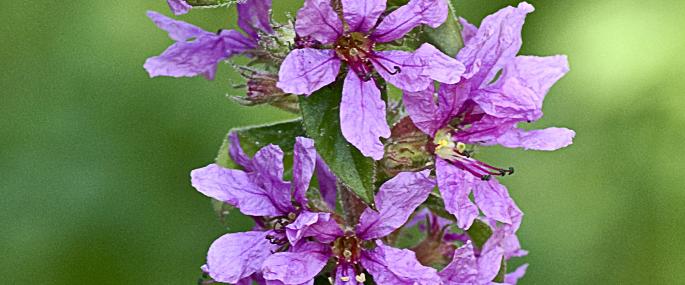Purple-loosestrife can be found in wet habitats such as reedbeds, fens, marshes and riverbanks, where its impressive spikes of magenta flowers rise up among the grasses. Many tall stems can grow from a single root stock. It flowers between June and August when its nectar becomes a valuable food source for long-tongued insects like bees, moths and butterflies, including Brimstones, Red-tailed Bumblebees and Elephant Hawk-moths.
Human activity, including the drainage of land for agriculture and development, has resulted in the disappearance of many of the UK's wetlands. The Wildlife Trusts are working closely with planners, developers and farmers to ensure our wetlands are protected and managed for the benefit of the plants and animals they hold, including Purple-loosestrife. We have a vision of a 'Living Landscape': a network of habitats and wildlife corridors across town and country, which are good for both wildlife and people. You can support this greener vision for the future by joining your local Wildlife Trust.
